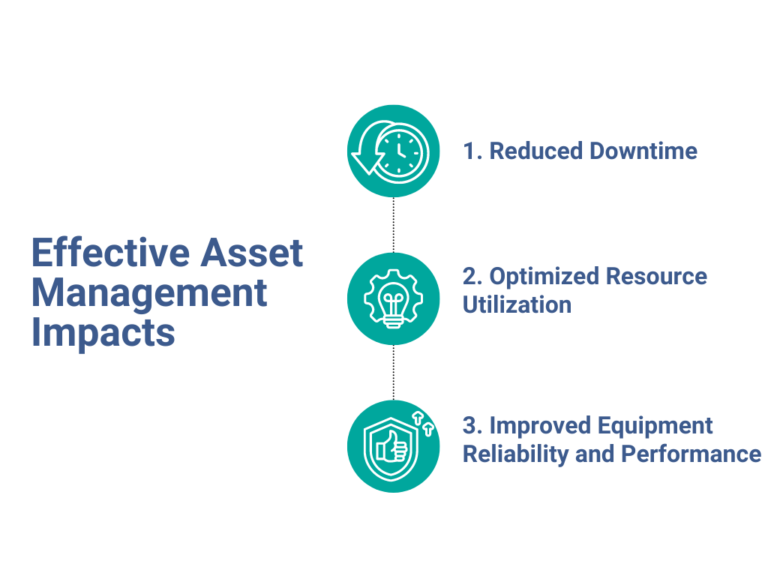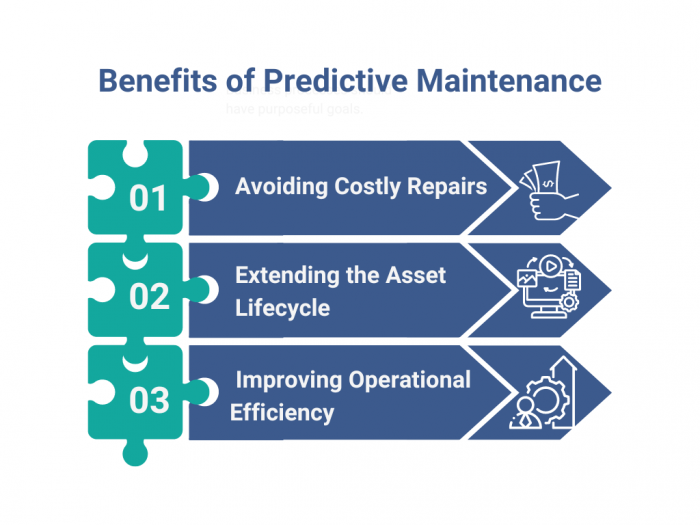In industries like energy and oil & gas, the stakes are high, and the margins for error are slim. These sectors rely heavily on complex and expensive equipment. Therefore, operational efficiency is crucial, and effective asset management is not just an advantage—it’s a necessity.
Robust asset management practices are key to staying competitive and minimizing risks from equipment failures and operational disruptions.
Asset management focuses on tracking, maintaining, and optimizing physical assets throughout their lifecycle to maximize their performance and value. In industrial settings, this ensures that businesses efficiently manage their critical assets—such as equipment, infrastructure, and digital tools—from acquisition through to disposal.
Key components of industrial asset management include:
Effectively managing these components has several benefits, such as:
Proper management of the asset lifecycle—from initial acquisition to final disposal—is crucial for minimizing costs and operational disruptions. Effective equipment management has a direct impact on the overall health of industrial operations. It ensures that assets are available at all times, reliable, and performing at their best.
By implementing robust asset management practices, companies can achieve significant improvements in three critical areas:

One of the most immediate benefits of effective asset management is the reduction of downtime. When field employees properly track, maintain, and monitor assets, the likelihood of unexpected failures decreases dramatically.
This proactive approach allows companies to schedule maintenance during planned shutdowns rather than respond to unplanned equipment failures. This way, you can minimize disruptions to operations.
Asset service management plays a crucial role in optimizing the use of different types of resources—both human and material. A clear overview of the status and needs of each asset helps allocate maintenance tasks with greater efficiency.
As a result, companies can use resources where they most need them. This not only reduces waste but also improves the overall efficiency of operations.
Consistent and effective maintenance management ensures that equipment operates at peak performance. By adhering to a well-planned maintenance schedule, companies can prevent minor issues from escalating into major problems.
As a result, they can extend the lifespan of their assets and ensure reliable operation. This reliability translates directly into better productivity and profitability.
Maintenance management is integral to the success of asset management. It ensures that assets receive the care they need to function optimally. Regular inspections, preventive maintenance, and timely repairs all contribute to the long-term health of equipment, preventing costly breakdowns and ensuring that operations continue smoothly.
Effective asset management process is vital for operational success, but it comes with its own set of challenges, such as:
One of the most significant challenges in asset management is the risk of equipment failures leading to unplanned downtime. These failures can disrupt operations and lead to expensive emergency repairs and lost revenue.
For companies with operations spread across different sites, keeping track of asset performance can be daunting. Disconnected data sources and inconsistent monitoring can result in inefficiencies and missed maintenance opportunities.
Without clear visibility into each stage of an asset’s lifecycle—from acquisition to disposal—companies struggle to make informed decisions. This lack of insight can lead to suboptimal use of assets, premature failures, and increased costs.
Strategic asset management solutions can help overcome these challenges. They can improve your operational resilience, reduce costs, and ensure that your assets deliver maximum value throughout their lifecycle. Here’s how you can make that happen:
Technologies like RFID, barcodes, and GPS can significantly enhance asset tracking. By tagging assets and monitoring their location and status in real-time, companies can streamline inventory management. They can also reduce financial losses and ensure that assets are available when needed.
Predictive maintenance uses real-time data and advanced analytics to predict when equipment is likely to fail, allowing companies to perform maintenance before issues arise. This proactive approach reduces unexpected downtime, extends the life of equipment, and lowers maintenance costs.
Data analytics can transform raw data into actionable insights, helping companies identify inefficiencies and optimize operations. By analyzing performance metrics, companies can detect patterns, forecast future issues, and make data-driven decisions that enhance asset performance and operational efficiency.
Predictive maintenance is a powerful approach within asset management that leverages real-time data and advanced analytics to predict equipment failures before they happen.
Traditional maintenance strategies are often reactive or adhere to a schedule with fixed intervals. In contrast, predictive maintenance uses data from sensors and monitoring systems to assess the actual condition of equipment in real time. This allows companies to identify potential issues early and address them before they lead to costly failures or downtime.
Integrating predictive maintenance into asset management practices is essential for optimizing equipment health and ensuring operational efficiency.
Predictive maintenance provides a clear, data-driven picture of an asset’s condition through continuous monitoring of equipment performance. This proactive approach allows companies to schedule maintenance activities only when necessary, based on actual equipment needs.

By predicting failures before they occur, predictive maintenance enables companies to intervene early, often addressing minor issues before they escalate into major problems.
This not only reduces the need for expensive emergency repairs but also minimizes the risk of prolonged downtime. Both can be particularly costly in industries like energy and oil & gas.
Having a predictive maintenance plan in place helps extend the lifespan of critical assets by ensuring they are in optimal condition. Regular monitoring and timely maintenance prevent excessive wear and tear, allowing equipment to operate effectively for longer periods and maximizing the return on investment.
By reducing unplanned downtime and optimizing maintenance schedules, predictive maintenance contributes directly to improved operational efficiency. Equipment that is well-maintained and less prone to failure operates more reliably, which in turn enhances overall productivity and profitability.
Incorporating predictive maintenance into asset management practices is a strategic move that safeguards equipment health and drives operational success. Companies can anticipate and address issues before they become critical, predictive maintenance ensures that assets remain reliable, efficient, and cost-effective throughout their lifecycle.
In industrial environments, the management of assets is both complex and critical. Asset tracking systems play a pivotal role in ensuring operational efficiency.
These systems utilize technologies like RFID (Radio Frequency Identification), GPS, and IoT (Internet of Things) to monitor and manage assets in real time. This provides organizations with accurate, up-to-date information about the location, condition, and status of their equipment.
Asset tracking systems give companies full visibility over their physical assets. This includes assets across multiple locations or those moving through different stages of the production process.
By implementing these systems, businesses can easily monitor the movement, usage, and maintenance needs of their equipment. This can lead to more informed decision-making and improved resource management.
RFID tags, GPS, and IoT sensors enable real-time tracking of assets. This allows companies to know exactly where each piece of equipment is at any given time.
Real-time visibility is crucial for managing large inventories. This prevents the loss and misplacement of assets and ensures that they are always available when needed.
With precise tracking data, organizations can optimize the use of their assets. By understanding usage patterns, businesses can ensure that they allocate equipment efficiently, reducing idle time and maximizing productivity. This leads to better resource allocation and often results in cost savings.
You can integrate asset tracking systems with maintenance management software. This allows you to automatically schedule maintenance services according to actual usage data rather than on fixed schedules.
So, your field employees can perform maintenance when necessary. This can reduce the likelihood of equipment failure and extend the life of the asset.
IoT-based tracking systems can provide detailed insights into the condition of assets, including performance metrics and environmental factors like temperature and humidity. This information helps in proactively managing equipment health, ensuring that assets are operating under optimal conditions and minimizing the risk of unexpected breakdowns.
By leveraging asset tracking systems, companies can significantly enhance their operational efficiency. These technologies provide the critical data that field and back-office teams need to manage assets more effectively.
This, in turn, ensures that your teams utilize equipment to its fullest potential, maintain it at the right times, and have it always visible. This level of control not only improves day-to-day operations but also contributes to long-term operational success and sustainability.
Implementing a robust asset management and maintenance strategy is essential for maximizing the value and efficiency of industrial operations. Here are some best practices that can help companies optimize their asset management processes, reduce costs, and improve long-term operational success:
Routine inspections and scheduled maintenance are critical to ensuring that equipment operates at peak efficiency. Regular checks help identify potential issues before they become serious problems, reducing the risk of unexpected breakdowns and costly repairs. A disciplined maintenance routine also extends the lifespan of assets, ensuring that companies get the most value from their investments.
Leveraging asset management software can greatly enhance the efficiency of managing large and complex inventories. These tools can automate tasks like maintenance scheduling, inventory tracking, and resource planning.
This reduces the administrative burden on staff and minimizes the risk of human error. Automation also ensures that maintenance is timely and consistent, helping to prevent equipment failures and optimize operational performance.
Centralized data management is crucial for effective asset management. By consolidating asset data into a single system, companies can gain a comprehensive view of their operations, enabling more informed decision-making. Centralized data allows for better tracking of asset performance, more accurate forecasting, and improved resource allocation. This holistic approach helps companies avoid inefficiencies and ensures that they use assets optimally.
By adopting asset management best practices, companies can achieve significant cost savings and improve their long-term operational success.
Regular maintenance and inspections reduce the likelihood of expensive emergency repairs and extend the life of assets. Meanwhile, automation reduces labor costs and increases operational efficiency.
Centralized data management supports strategic decision-making, enabling companies to allocate resources more effectively and respond quickly to changing operational needs. Together, these practices create a strong foundation for sustained operational excellence and profitability.

Effective asset management is a critical component of operational success, particularly in industries where equipment reliability and efficiency are paramount.
To see how effective asset management and maintenenace can transform your operations, request a Fieldequip demo. Discover how our tools can help you optimize your asset management strategy, enhance equipment performance, and ultimately boost your operational success.
Would you like to have a free demo or have any questions about FieldEquip?
US Corporate Headquarters 1011 S. Hwy. 6, Suite 117 Houston Texas 77077 US